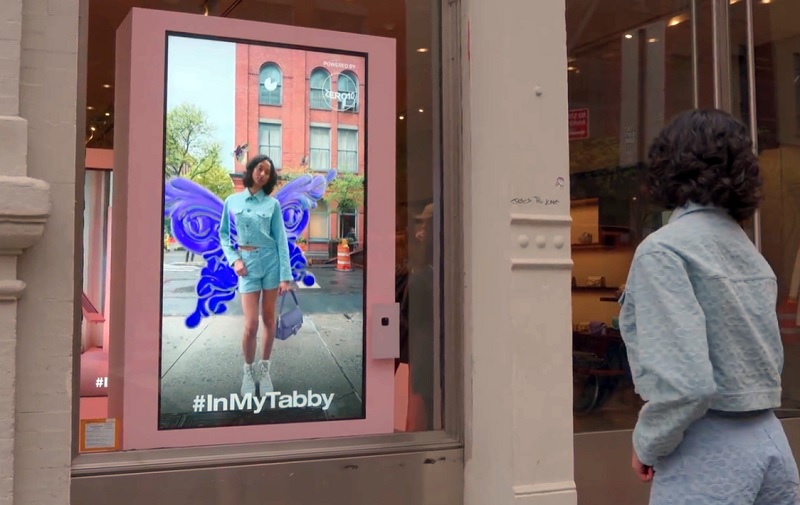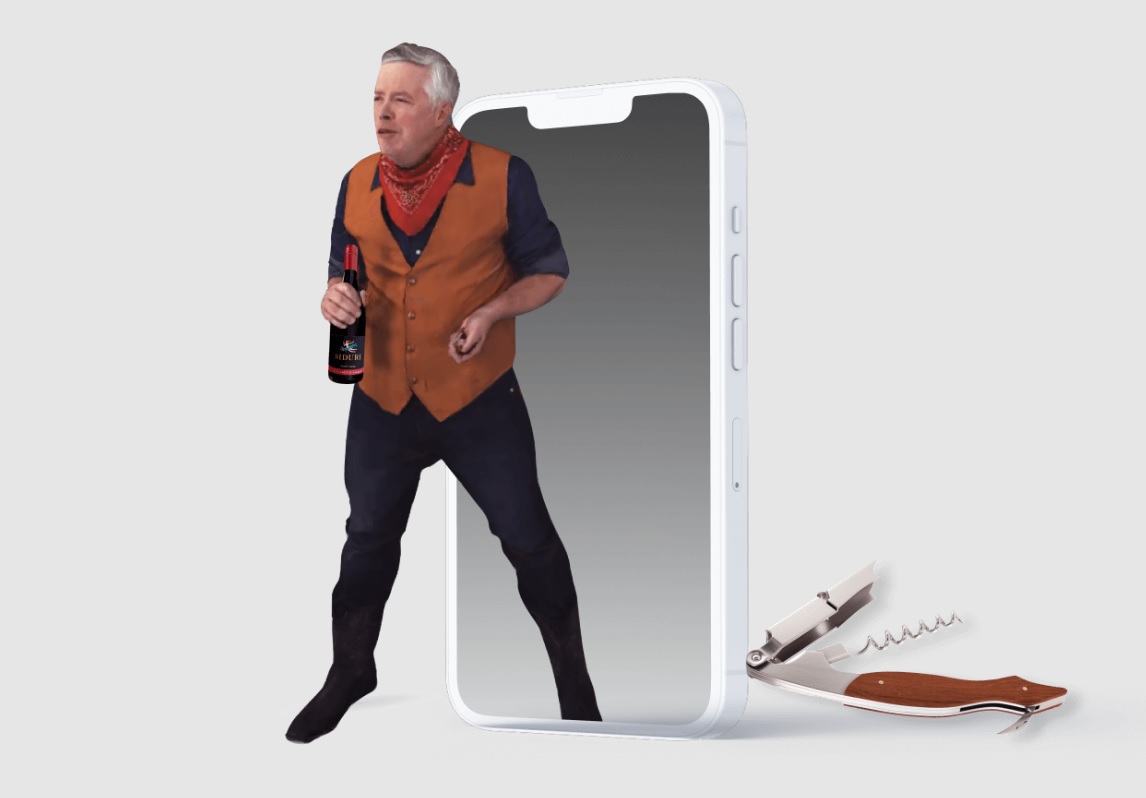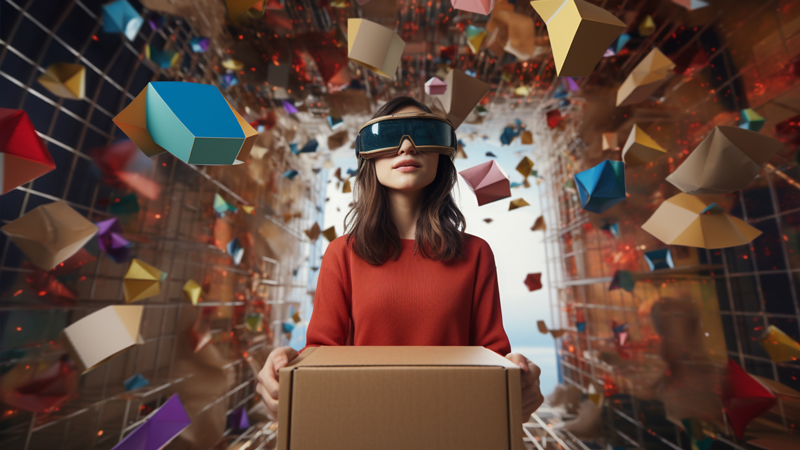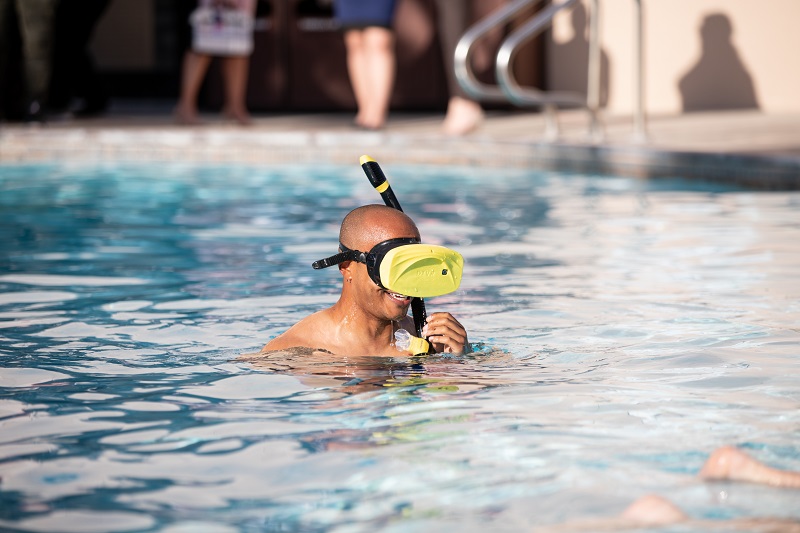Welcome to another installation of our blog series all about how XR can be used to enhance branded experiences. In this post we will look at how augmented and virtual reality can be used to make something ordinary seem not-so-ordinary.
With consumers constantly bombarded by advertisements and brand messages, standing out from the crowd can be a challenge. Augmented Reality (AR) offers a unique solution to this problem by transforming everyday objects and locations into interactive and engaging experiences. By augmenting the mundane, brands can create memorable interactions that resonate with consumers on a personal level.
How does it work?
The approach that brands or companies will take depends a lot on exactly what it is they are trying to augment. In most cases, given the sheer number of users in the world that have access to a smartphone, some sort of mobile-based experience is likely going to be the best route of reaching as large an audience as possible. Not everyone wears their VR headset out in the street after all (although this may change once Apple launches their Vision Pro).
With that in mind, a WebAR or app-based XR experience is going to be one option for brands. As noted in our previous blog in this series about virtual try-on solutions, WebAR allows users to access AR experiences directly through their web browsers – often on a smartphone or tablet device. However, that is not to say that it is the only option.
Other solutions such as ‘AR mirrors’ can provide fun and engaging experiences for users that are fixed-in-place. An AR mirror is a digital display that uses augmented reality technology to overlay virtual objects or information onto the user's reflection. It functions like a traditional mirror but enhances the reflection with additional content. Similarly, clever use of screens, displays and camera equipment (which is essentially what an AR mirror is anyway), can help to create the perfect conditions for an immersive experience that users, customers or passers-by will never forget.

Not-So-Mundane Case Studies
Pepsi Max’ AR Bus Stop
Companies have created some truly memorable experiences using XR technology. One such example was from media agency Talon, which helped Pepsi Max to create an incredible experience at a busy bus stop on New Oxford Street in London, UK.
What appeared to commuters waiting for a bus to be a simple glass side to the bus stop, was in fact a screen. This screen projected a live feed of the street, as it was linked to a camera on the other side of the bus stop. However, virtual content such as spaceships, giant squids from the sewers, and tigers roaming the streets of London, was overlaid onto this live feed, and prompted some amazing responses from members of the public.
Driven by curiosity and a sense of wonder (plus probably a bit of adrenaline), people walked to the other side of the bus stop to check that their eyes weren’t deceiving them, at which point they would see Pepsi’s brand and advertising. This in itself was a stroke of marketing genius, as it tied some of the strong human emotions that people were experiencing at the time to the Pepsi brand, thus making it a truly memorable experience for all involved.
Snap and Coca-Cola’s AR Vending Machine
Another example of enhancing what is otherwise a fairly mundane object and process was Snap’s AR vending machine project, which saw the company implement its augmented reality technology into the process of buying a drink from a Coca-Cola vending machine.
Together with Coca-Cola, Snap saw an opportunity to reimagine the humble vending machine into a way to connect with more deeply audiences. The two companies worked to integrate SnapAR technology into the vending machine in order to allow vending machine users to do more than just order a can of Coke. By also enabling them to try on custom branded merch, or play a multiplayer game, Snap and Coca-Cola essentially transformed a vending machine from a transactional experience, into an experiential one (and also created the world’s first vending machine powered by Snap’s technology while they were at it).
Other Examples
Elsewhere, companies have augmented the labels on their products to offer buyers immersive experiences that teach them more about the items that they are buying. For example, brands such as 19 Crimes and Siduri Wine have both created immersive experiences on their respective wine bottle labels to further engage with customers using AR, and ultimately build a deeper connection with the brand in the process.
Although it seems like food and drinks companies have taken the lead in using AR to augment what would otherwise be a normal product, these experiences are thankfully not just limited to consumable goods and bus stops. These amazing 3D immersive billboard advertisements are one excellent demonstration of the power of immersive technology to captivate audiences on a large scale.

Other examples could include augmented or mixed reality-enhanced tours that can add an immersive and digital layer to what might otherwise be a regular old gallery or museum experience. This is not to say that galleries or museums are inherently boring or mundane (although I’m sure we all remember going on a school field trip to such a location and not being that into it..?) but imagine what AR or MR could add to the experience, and how it can help to really leave a lasting impression on young minds as a result.
How about a virtual reality swimming pool experience that turns water into a specific brand of soup (maybe food and drink really is the best mundane item to augment), or shampoo, or cologne, motor oil, or some other liquid-based product – the limit is truly up to the imagination. One thing is for sure is that there are already companies that provide VR swimming experiences, for example Ballast VR, who also happened to join us at AWE 2019 to showcase their technology to attendees in the convention center swimming pool.
An attendee at AWE USA in 2019 enjoying Ballast VR's virtual reality pool experience.
How do you implement these sorts of branded XR campaigns?
Tapping into the emotions of consumers in order to create something memorable is really the key to success here. By augmenting the mundane, you are changing people’s perceptions of something that they may not have otherwise noticed. If anything, the actual branding part is almost secondary to the experience itself, but if that memorable XR-powered experience has a brand name tied to it, then it is sure to resonate with consumers regardless.
Implementing XR to augment the mundane requires a combination of creativity, technology, and strategic planning. Here's how brands can get started:
WebAR Experiences: WebAR allows users to access AR experiences directly through their web browsers. This offers a seamless integration with existing marketing channels and can be used to enhance websites, social media posts, or email campaigns. Plus, with increasing functionality being constantly added to WebAR platforms, including various tracking options – from hand, face, body, object and world tracking – there are plenty of ways brands can tap into the power of a WebAR experience to create something memorable for customers. Now, even Generative AI is being added to WebAR platforms, which opens up an entirely new set of approaches that brands can take, in that users will now be able to actively shape experiences, as opposed to just passively consuming branded content.
Branded App Experiences: Creating a dedicated AR app provides a more personalized and immersive experience. Brands can offer exclusive content, rewards, or features that encourage users to engage with the app regularly. However, requiring users to download an app does add an extra layer of friction for users to access an experience. So unless companies or brands already have an existing app, it is worth thinking hard about whether building an entirely new app just for an AR experience truly outweighs the benefits of using WebAR.
Social Filter Experiences: Platforms like Snapchat, Instagram, and TikTok offer tools to create branded filters and lenses. These can be used to promote products, events, or simply to create shareable content that raises brand awareness. We will explore this topic in more detail later in this blog series too however.
Hiring an XR creator, developer or agency: Collaborating with developers and agencies often helps to speed up the development process and can provide instant access to specialized expertise and technology. There are several talented creators, developers and agencies operating in the XR space today. The AWE community is a great place to learn from these people, and AWE events are an even better place to meet them in real life. Using a professional agency or creator is always a great option for brands with a budget.
What is the value in branded AR or VR campaigns?
Ultimately, by augmenting everyday items and locations, brands can create unforgettable memories for consumers, which can help to really set brands apart from their competitors, and in turn foster deepened customer loyalty.
The key to any branded XR strategy is coming up with an idea that captivates people, whilst simultaneously harnessing XR technology to do so. AR and VR have a special power to capture people’s imaginations and leave a lasting impression on the minds of users, thanks to the profound experiences that can be created with the technology. By embracing XR technology, companies can create engaging and memorable brand experiences that resonate with today's tech-savvy consumers.
Whilst we can’t provide you with fresh ideas ourselves (other than fresh food and produce-based content it seems), we can provide a venue at AWE’s global events and gatherings where you’re bound to find either some inspiration for ideas, or inspirational people who have ideas of their own that can help your company or brand to deliver the next viral marketing campaign.



